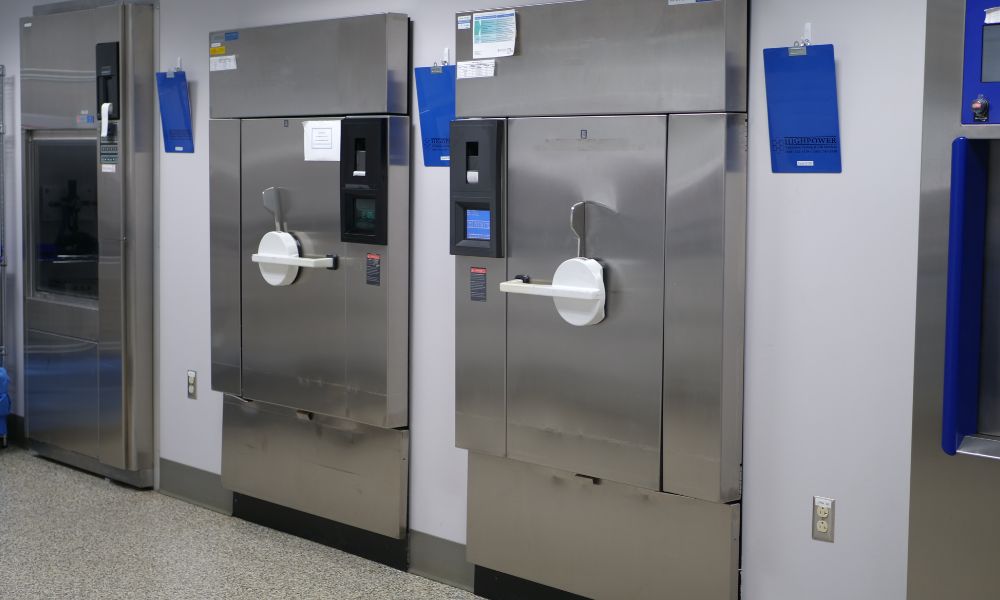Medical devices, instruments, and equipment must all remain free from harmful microorganisms that can cause infections or diseases in order for them to be safely used on patients. Sterilization is a process that ensures the safety and effectiveness of these products when used in patient procedures.
The most common method of sterilization is steam sterilization. Data suggests that 90 percent of all cycles run in hospitals throughout the US are steam cycles. The process uses high-pressure steam to eliminate microorganisms and bacteria. But how can you validate the effectiveness of your own product’s sterilization process? By following the standards, let’s discuss what a steam sterilization efficacy validation for medical devices is and its overall importance in the industry.
What’s Involved in a Steam Sterilization Validation Study
A steam sterilization efficacy validation verifies, through a documented process, that the sterilization method chosen for your device can consistently destroy the bacteria and microorganisms found on the devices (after clinical use) to a Sterility Assurance Level (SAL) of 10-6. The typical method of validation used is called the “100 Percent Overkill” method of validation. In this method, the device is inoculated in worst-case locations with a highly resistant microorganism having a population of 106. Next, a half-cycle using one-half of the full cycles’ exposure time is run, verifying that at least 1M of the highly resistant bacteria were killed. The test is performed in triplicate and, theoretically, a full cycle will achieve an SAL of 10-6. Device manufacturers should carry out the appropriate validation testing whenever designing a new medical device or modify an existing device prior to its approval for use in the medical market. For a steam validation to yield acceptable results, a product must withstand several critical parameters.
Important Validation Parameters to Consider
Now that we know what a steam sterilization validation for reusable medical devices is, it’s time to discuss the required testing in more detail. The three (3) most critical variables in the steam sterilization process are time, temperature, and sterilant contact, which we will discuss below. But first, let’s remember that no two medical devices are the same, but they all must hold up to the same regulatory standards when it comes to sterilization. Choosing the appropriate test parameters for a specific device design ensures that the sterilization process can safely and effectively sterilize the device without ruining the device’s integrity.
Sterilization Temperature
The first parameter to examine during a steam sterilization validation is the temperature. The temperature should be high enough to achieve sterilization but not too high that it damages the device material. Validation professionals measure temperature by placing measuring devices at various points within the sterilization chamber. The sterilization chamber typically maintains a sterilization temperature of between 121 and 135 degrees Celsius for anywhere from 3 to 30 minutes of exposure time, depending on the complexity of the device being validated.
Exposure Time
The second parameter is time. Validation professionals monitor exposure time during validation studies. Medical devices must be exposed to the proper temperature and pressure for a specified amount of time to achieve sterilization. They determine the proper cycle time by evaluating factors such as the device type, dimensions, its complexity, and the typical load size it will be processed with.
Sterilization Pressure and Vacuum
The third parameter is sterilant contact. This is achieved by having a cycle with the appropriate pressure and vacuum needed for sterilization to occur. Pressure within the chamber should correlate with the sterilization temperature, and if the vacuum inside the chamber is not sufficient, there is a risk that the sterilization process will not be effective in sterilizing the device.
Residual Moisture
A separate validation test that often accompanies a steam sterilization validation is to determine an appropriate dry time to limit residual moisture. After sterilization, medical devices must be dry to prevent the growth of any remaining microorganisms. Validation of the residual moisture involves analyzing the water content left in the device load and documenting that it’s below the acceptable limit to ensure the device’s sterile integrity.
Steam sterilization validation is crucial in ensuring the safety, reproducibility, and effectiveness of medical devices. As such, medical device manufacturers must work with qualified laboratories such as HIGHPOWER to carry out this specific validation process. Our process for sterilization validation for medical devices ensures that our clients’ devices follow the regulatory bodies’ requirements and that they meet the highest possible standards. Contact us today to start the validation testing process needed for your device.
